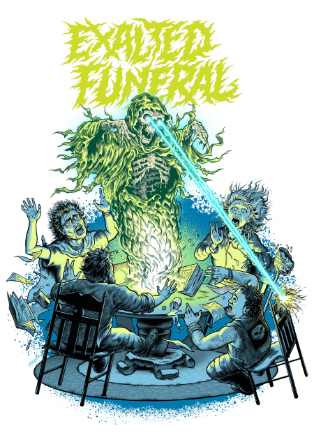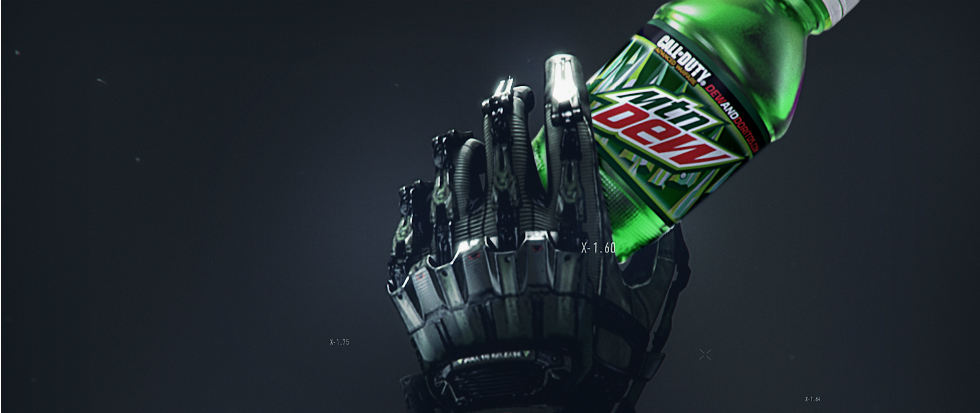
Call of Dewty: How We Eat Games
Cheetos-encrusted fingertips on controllers, Dorito crumb-stained t-shirts, Mountain Dew induced heart palpitations… just a few of the common images people tend to associate with those who play videogames. Factual or not, these associations communicate a set of beliefs about the gaming community. The rituals around our food consumption transmit information about what we value, our beliefs, and culture. It can tell us who is welcome to sit at the table with us and who isn’t. So what is the food of games telling us?
MODERN FOODFARE
The food people consume, the manner of its consumption, the thoughts and actions around its preparation and even its disposal, help transmit a set of cultural beliefs and identities. Food anthropologist Carole Counihan says, “Food is a product and mirror of the organization of society on both the broadest and most intimate levels. Food is a prism that absorbs and reflects a host of cultural phenomena.” When that prism of food is applied to gaming culture, what is reflected are a set of beliefs and stereotypes about what it means to be a gamer and who the audience of gamers is. Food occupies a unique space and the way our food habits are formed and shaped are dependent on everything from the media we consume to the language used at the dinner table.
Food is also a powerful tool in helping us realize and experiment with identity. The act of eating can contribute to the realization of the self. Paul Fieldhouse notes in the book Food and Nutrition: Customs and Culture, “Food becomes a personal trademark – a source of personal satisfaction and achievement.”
We’ve all seen ads that depict a sad woman stealing away to the fridge to shovel in ice cream, or the Italian grandmother who insists on a certain brand of pasta sauce for her family dinners. These ads all call upon cultural stereotypes. The image of the grandmother invokes the authority figure of a ‘real Italian’ matriarch who surely knows what she’s talking about when it comes to pasta sauce.
Commercials like this are asking us to use the stereotypes we have about Italians and family to make the leap that the person before us is an authority figure on pasta sauce. The sad female drowning her sorrows in the bottom of an ice cream pint? Well, that image requires the viewer to use well-established gender expectations. These commercials make sense due to the history of cultural stereotyping and beliefs held prior to viewing the media. Now, add videogames and gaming culture into that mix and you have a veritable feast of fun to dissect.
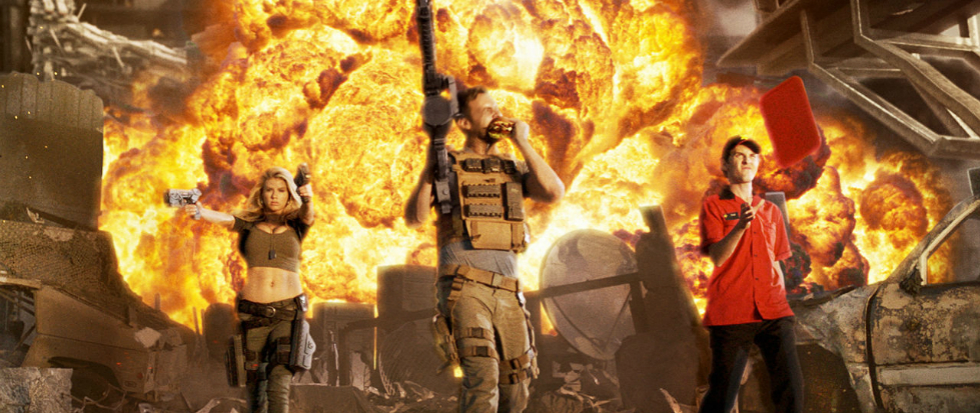
Prior to Activision’s release of Call of Duty: Black Ops III, Carl’s Jr. and Hardee’s released an ad for what it called the Ultimate Care Package. It was a branded combo meal sporting peel-and-win game pieces that enabled entry into what the press release for the restaurant chain called the “ultimate gamer’s dream.” The grand prize consisted of a VIP trip to design studio Treyarch and the chance to meet the Call of Duty development team. Additional prizes included various specialized mod kits, a “Take Out” personalization pack and some free food coupons.
The hypermasculine elements of the Call of Duty franchise is echoed in the commercial. The male actor, Andrew Rush, depicts a battle weary player in desperate need of an ultimate care package. The fast food employee, a younger, less muscular male, can be seen ambling around shouting out the order number. At one point during the ad, Rush’s character is seen protecting the younger employee.
Actress Charlotte McKinney comes in, guns-a-blazin’ and compliments Rush on his ‘nice package’. Get it? The food package, not his junk (much to his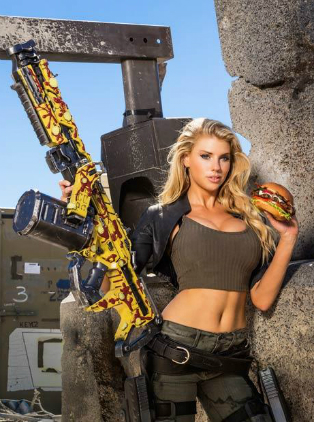 chagrin). Rush then takes a giant bite out of his burger as they all walk across the screen with various explosions erupting behind them. McKinney can also be seen sporting one of the specialized weapons from the Carl’s Jr. personalization pack (complete with ketchup and relish camo).
chagrin). Rush then takes a giant bite out of his burger as they all walk across the screen with various explosions erupting behind them. McKinney can also be seen sporting one of the specialized weapons from the Carl’s Jr. personalization pack (complete with ketchup and relish camo).
The ad is meant to appeal to CoD’s core demographic of white male, ages 18-24. The ad isn’t going to cause anyone to either play or not play the game, but it does communicate an overall tone. The ad sets a benchmark for whom the typical CoD player should strive to be. The All American male and female, fit and able-bodied. In this specific ad each person performs according to their ascribed cultural and gender specific stereotypes.
For the actress in the ad, like many Carl’s Jr. ads, food serves as the object of her desire. This is demonstrated through her verbal and nonverbal communication concerning Rush’s ‘nice package’. The conflation by mass communication of women’s sexual desire and food is a common and often employed tactic. Food is consumed not to fulfill a nutritional need but rather as a means to some prurient end.
The male lead can be seen satisfying his battle-driven hunger. He needs meat, and red meat at that, culturally significant due to its common equation with masculinity and strength. Only after Rush obtains and consumes his burger do McKinney and the Carl’s Jr. employee progress, they flank either side of the male lead as he leads them into battle – holding a burger in one hand and a gun in the other. He can do it all. Don’t you want to be like him? Play like her? Well, now you can.
These food tie-ins with games allows fans to engage in a kind of performance, it allows consumers to eat the game they love.
“When he buys an item of food, consumes it, or serves it, modern man does not manipulate a simple object in a purely transitive fashion; this item of food sums up and transmits a situation, it constitutes an information; it signifies.”
– Roland Barthes
BATTLE FUEL FOR BRANDS
Food enables the expression of personal identity, group affiliation or dissociation, and socioeconomic class, or as the scholars Claude Levi-Strauss and Mary Douglas have said, food is code. Deciphering the code of food, for example, can help us understand what values and beliefs are most important to a group of people. The food associated with gaming tells us a very narrow story. It’s a story that involves catering to a very narrow subset of the gaming population. It’s a tale largely modeled by corporations who may not always see the benefit of appealing to the diverse needs and audience of videogames.
Videogame and food tie-ins aren’t anything new, they date back to the 1980s with companies like McDonald’s and Atari teaming up or 7 Up and Pac-Man, to name a few. Over the last decade, however, the pervasiveness of the stereotype of typical the gamer – usually a young, white male – chugging Mountain Dew and shoveling Doritos has become so ubiquitous it’s hard to ignore.
Mountain Dew introduced Mountain Dew Game Fuel. The company created a citrus cherry flavor in advance of the Halo 3 release on the Xbox 360. This marked the first time the company created an exclusive beverage for the purposes of an entertainment tie-in.
The drink came with 30% more caffeine than regular Mountain Dew and boasted an “invigorating” taste. In 2007, Frank Cooper, VP of marketing for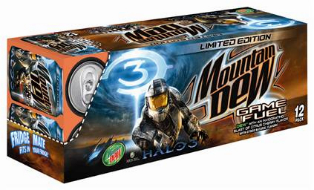 Mountain Dew said, “Microsoft’s Halo 3 is more than just a videogame, it’s become a cultural phenomenon that deserves its own special Mountain Dew extension.”
Mountain Dew said, “Microsoft’s Halo 3 is more than just a videogame, it’s become a cultural phenomenon that deserves its own special Mountain Dew extension.”
The game is so special, so significant, that it deserves its own brand just for players of the game. This marketing taps into the psychological relationship people have with brands. Brands help us construct and manage self-identity. Are you a part of the Halo community, did you play this game? Then this product is for you, as a member of this exclusive community. It evokes that psychological need to differentiate and assert our individuality.
In 2011, Brett O’Brien, then VP of marketing for Mountain Dew at PepsiCo, called the partnership between Activision and PepsiCo a “marrying of passions”. This marrying of passions has created the ability to consume them as well. All of this furthers the act of our roleplaying and identification as a gamer. Food is performative. Another means of saying this is who I am, this is what I am about. So the marrying of passions O’Brien is referring to helps further our roleplaying and identification as a gamer.
This partnerships has helped craft a narrative, which you may or may not disagree with, for what it means to be someone who games. This includes how that individual acts, what they look like and how, when and what they eat. Part of how people create and maintain their self-image is to align themselves with a product or brand which best associations with the prototypical version of the individual they wish to become.
In 2014, Activision partnered once again with PepsiCo brands to create exclusive content. The result was the Mountain Dew/Doritos Call of Duty: Advanced Warfare campaign Fuel Up For Battle. The campaign featured codes on specially marked packages of food and soda which enabled consumers to customize their character with exclusive accessories, unlock double experience points and rapid supply rewards.

“When our products help reward gamers in-game, we’ve found that they connect with our brands at a whole new level.”
– Greg Herman,
Senior Brand Manager Mountain Dew
Games have a great built in reward system which tell us when we are doing well or on the right track. This can help to activate the elusive dopaminergic loop, but brands themselves can become rewards. They act as modicums of accomplishment and manifestations of an individuals identity and the same can be said for food.
According to Indra Nooyi, the chairman and chief executive officer of PepsiCo Inc., Dew and Doritos are paired together because they have an “extremely high-co-purchase incidence.” In the U.S., over 60% of Mountain Dew households also purchase Doritos. Nooyi added, “In addition to the commercial benefits afforded by these cross-category promotions, we continue to yield cost synergies through continued integration.” (Translation? It’s cheaper.)
People craft narratives to make sense of the world around them, to fit their life experience within a story. To self-identify as a person who games, if that’s the individual we believe ourselves to be, then when we process incoming information from ads we begin to – as some studies suggest – incorporate those images and stories from brands into our own ongoing and evolving narrative.
Someone who plays Call of Duty likely has some positive memory associations with playing, like a joke shared with a group of friends at a sleep over. When an advertiser like Mountain Dew or Doritos invokes similar language of a favorite game or uses a beloved character from a game someone has a deep emotional connection to, it’s calling upon the personal narrative we’ve constructed with that game and its characters.
“Brands may be incorporated into consumers’ life narratives, which are used to describe their path of identity development, with brands as props or artifacts in that process.”
– Kent Grayson and David Shulman,
Journal of Consumer Research, 2000.
When we see Call of Duty Dew and Doritos joint packaging then, it becomes another prop someone may employ to demonstrate to the world that they are a member of that community. Still, none of this would matter if it didn’t work, but it does. It works very well.
DOING THE DO
In 2012, consumers redeemed 20 million Doritos and Mountain Dew “Rank Up” codes during the Call of Duty: Modern Warfare 3 promotion. The more consumers purchased, the larger the ounce-count, the more points players could accumulate. As a method to further increase buy-in from gamers, special flavors were also created, like Doritos Battle Black Pepper Jack. The creation of exclusive flavors and products for games encourages consumers to adopt and associate brands like Doritos and Mountain Dew with the games they love but also helps these brands become associated with their identity and self-expression as someone who games.
“Ads may prime mental simulation and autobiographical memory retrieval indirectly, with images, music, and so forth, or more directly, with specific instructions or cues for the consumer to follow.”
– Steven S. Posavac,
Cracking the Code, 2012
The 2013 “Every Two Minutes” campaign was part of another team-up between PepsiCo and Microsoft in preparation for the Xbox One release. Its successes hinged on the capitalization of Millennials with disposable income. It just so happens some 94% of the Millennials targeted by PepsiCo also played games for nine or more hours a week.
The sweepstakes pitted gamers against one another to compete for prizes in an online auctions. The campaign resulted in an increased sales of 39% for Mountain Dew from the previous year and an 11% sales jump were reported for Doritos.
Most of us have some sort of idealized version of ourselves we wish to become. There are people we look up to or groups we wish to be a part of, brands and food products become a way for us to inch closer to realizing the best versions of ourselves. It’s a way to say “I belong.” Gaming culture is filled with influential reference groups, social groups that we compare ourselves against, and we model behavior and even purchases, on what these reference groups do. This is all done in order to help satisfy the psychological need to express identity, to feel accepted.
Food can and does help us get closer to the feelings of belonging, to realizing and performing the best versions of ourselves. In the same way it can encourages these feelings in some of us, however, it can leave others behind. If you aren’t familiar with the rituals, if you don’t participate in the consumption of games in the same way, do you belong or are you an outsider? These considerations are not arbitrary. This is about how we spend our time and money, it’s about how we realize and actualize our self.
The Carl’s Jr. ad tells the story of a very specific player. Mountain Dew and Doritos target a specific audience who, they would have you believe, behaves and performs in a very particular way. The reality of whether or not any of these brand-constructed images are ‘true’ matters less than the question of who’s missing from these images. It matters less than asking the question of who gets to sit and eat at the table of games and who gets left behind.
